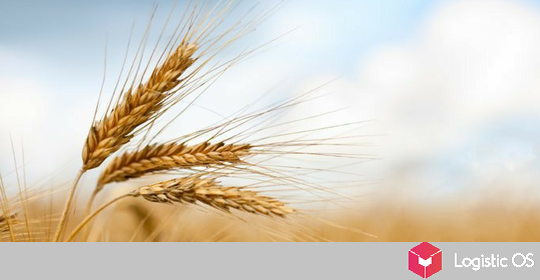From January 1 to June 2021, exporters will be able to export only 20 million tons of grain.
During her working trip to Novorossiysk, Deputy Minister of Agriculture Oksana Lut held a meeting at which she noted that, despite a good harvest, the system of non-tariff quotas for grain exports will remain relevant.
The Ministry of Agriculture fears a shortage of grain in the domestic market against the background of the rush demand for it in the world market.
There is no exact information yet, but quotas are not envisaged in the first half of the agricultural year.
Also, the Ministry of Agriculture discussed the issue of introducing an export duty on grain, but such a measure is considered irrelevant, since it cannot significantly affect the decline in exports, and will take away part of the profitability from agricultural producers.
Of course, all such measures do not add optimism to Russian producers: the quota mechanism applied this spring was not transparent.
In addition, it has led to an increase in demand among exporters for grain «in reserve».
And the rush demand became the impetus for raising prices by farmers, which forced some exporters to work at a loss so as not to disrupt contracts.
Currently, the harvested wheat harvest has already become the second largest after 2017: cereals and legumes have been threshed from 42.1 million hectares, which is 87.7% of the sown area.
121.1 million tons of grain were threshed with an average yield of 28.8 centners per hectare.
At the same time, the wheat harvest is 82.9 million tons, and the harvest of milling soft wheat — 57.7 million tons.
According to the latest data, grain exports from Russia may reach 50 million tons and become the second after 2017/18 agricultural year, when 52.4 million tons of grain were shipped.
The forecast also takes into account the size of the replenishment of grain carry-over stocks, which reached a minimum level as of July 1, 2020, and an increase in domestic consumption, which is estimated at 1 million tons.
By July 1, 2021, carryover stocks should amount to 12-13 million tons against 10.8 million tons this year.

If we talk about the dynamics of grain prices, then, after the past large tenders, the price began to decline.
The grain harvest in Argentina and Australia may have a significant impact on prices: the export potential of Argentina is not so high, but its price will be lower in the markets of the Middle East and a number of African countries.
As for Australia, it can compete with Russia in a number of Asian markets, where Russia has begun to increase supplies.
One should not exclude the influence on the price of grain and the course of winter sowing, which in the South and European territory of Russia is still undergoing severe drought.
Since the beginning of this agricultural year, the list of importing countries has been replenished with new buyers, who were not there last season. These are countries such as Saudi Arabia, Brazil, Mauritania.
Deliveries to Finland and Thailand resumed.

